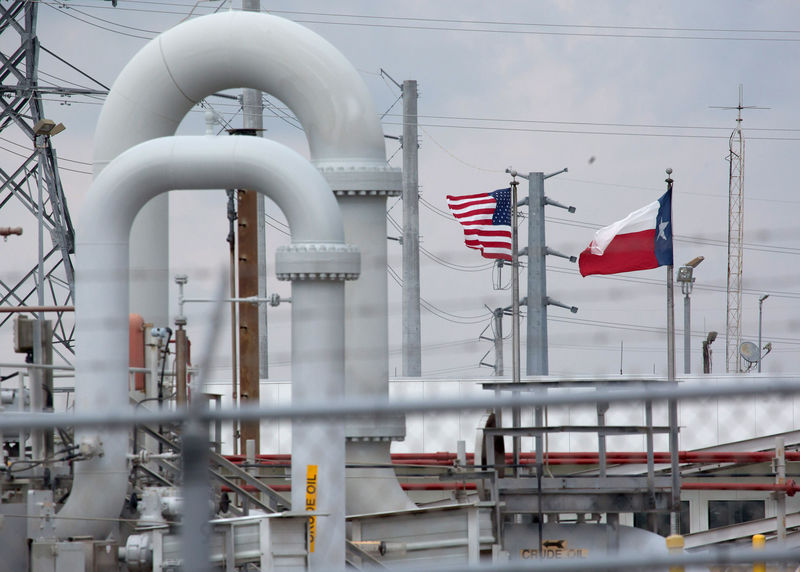By Julia Payne
LONDON (Reuters) - Oil prices dipped on Thursday after U.S. inventories swelled to their highest level since December adding to concerns about a global crude glut but OPEC talk of an output cut limited losses.
Benchmark Brent had fallen 10 cents to $63.32 a barrel by 1447 GMT, partially recovering from a more than $1 drop in early European trading. U.S. WTI fell more than a $1 before easing back to trade down 28 cents at $54.35.
Trading was thin due to Thursday's Thanksgiving holiday in the United States.
UBS analyst Giovanni Staunovo said oil was helped off its lows by a weaker U.S. dollar, making dollar-denominated crude cheaper for holders of other currencies. "Additional support has probably come from lower Iranian exports," he said.
Iran's exports have dropped by several hundred thousand barrels per day (bpd) this month, a leading tanker-tracking company said on Thursday, suggesting U.S. sanctions that kicked in this month have scared off many buyers.
But prices remain under pressure from rising U.S. crude inventories, which climbed by 4.9 million barrels to 446.91 million barrels last week, their highest since December, the U.S. Energy Information Administration (EIA) said.
U.S. crude oil production also stayed at a record 11.7 million barrels per day (bpd), the EIA said.
Tamas Varga, analyst at PVM brokerage, said the market trend remained bearish. "The question is what OPEC will do in December, will they cut, and if so, by how much?" he said.
The Organization of the Petroleum Exporting Countries is worried about the emergence of a glut. But OPEC's biggest exporter Saudi Arabia is under U.S. pressure not to take any action on cutting output that would push prices higher again.
"Oil prices getting lower. Great! Like a big Tax Cut for America and the World. Enjoy!... Thank you to Saudi Arabia, but let's go lower!" U.S. President Donald Trump tweeted on Wednesday.
More U.S. crude could be heading to market as U.S. pipeline bottlenecks are cleared in the second half of 2019. Rising U.S. oil output has outpaced capacity to transport the extra crude.
To counter the surge in supply, OPEC is considering a deal to cut production when it meets on Dec. 6, although OPEC member Iran is expected to resist any voluntary reduction. Russia, an ally of OPEC, has also shown no sign it would join any cut.
